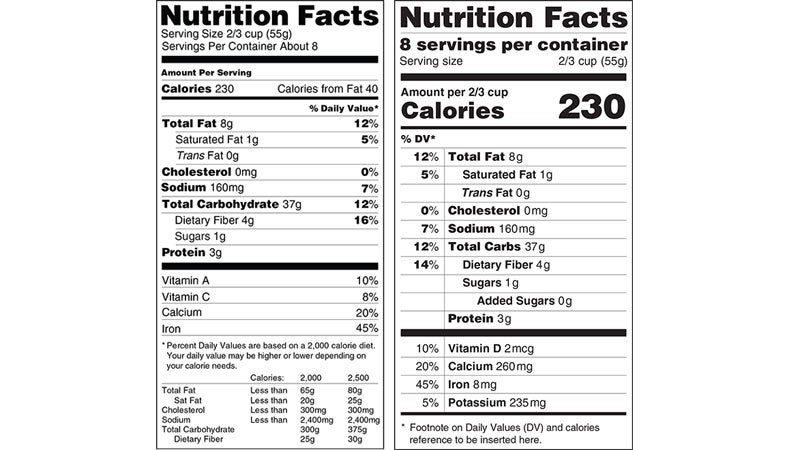For the first time in more than 20 years, the FDA has proposed changes to the iconic “Nutrition Facts” chart printed on nearly every food product sold in the United States. The label hasn’t been modified since its 1993 introduction, but the agency claims that Americans’ habitsŌĆöand what they know about nutritionŌĆöhave.
“Obesity, heart disease, and other chronic diseases are leading public health problems,” says Michael Landa, director of the FDA’s Center for Food Safety and Applied Nutrition. “The proposed new label is intended to bring attention to calories and serving sizes, which are important in addressing these problems. Further, we are now proposing to require the listing of added sugars.”
The most notable changes will take place near the top of the familiar chart. The FDA has chosen to place a larger emphasis on calories and serving size, both to reflect their importance and how Americans realistically consume food.
For example, with the new label you might see the calories in your ice cream doubleŌĆöbut not because your Ben & Jerry’s just got twice as unhealthy (or delicious, depending on how you see it). A close inspection of the chart would reveal a slash in servings per container, because the FDA now realizes its prescribed servings are often considerably smaller than the ones average Americans eat.
Certain ingredients will also receive special treatment. “Added Sugars” will be included as a subset of “Sugars” (similar to how “Sugars” is now a subset of “Total Carbs”), because the average American consumes 16 percent of his or her daily calories from sugars added during food production. Additionally, the FDA will eliminate “Calories from Fat,” because it acknowledges that the type of fat is more important. It will still require information about total, saturated, and trans fat.
In a further effort to help Americans understand not just what’s in their food but also the impact of those ingredients, the new labels will shift recommended daily values from the right side to the left for easier readability. Information about potassium and vitamin D will also be required for every label. Potassium helps to lower blood pressure and prevent hypertension, while vitamin D helps bone health, especially among women and the elderlyŌĆöFDA nutritionists say Americans aren’t consuming enough of these nutrients.
The FDA’s “Nutrition Facts” revisions aren’t as aesthetically drastic as the ones the USDA made in 2005 . That’s because the redesign is less of a rearrangement of existing data than a renewed emphasisŌĆöessentially, the FDA is saying, different aspects of our nutrition are more important than previously thought.
The agency has published its proposed changes for a 90-day comment period and suggest that the food industry be given two years to comply after the approval of any modifications.
As part of her Let’s Move! health campaign, first lady Michelle Obama helped with the announcement and quickly voiced her support:
“For the 1st time since the nutrition label was developed…weŌĆÖre overhauling these labels to make them easier to read & understand” ŌĆöFLOTUS
ŌĆö FLOTUS (@FLOTUS)


